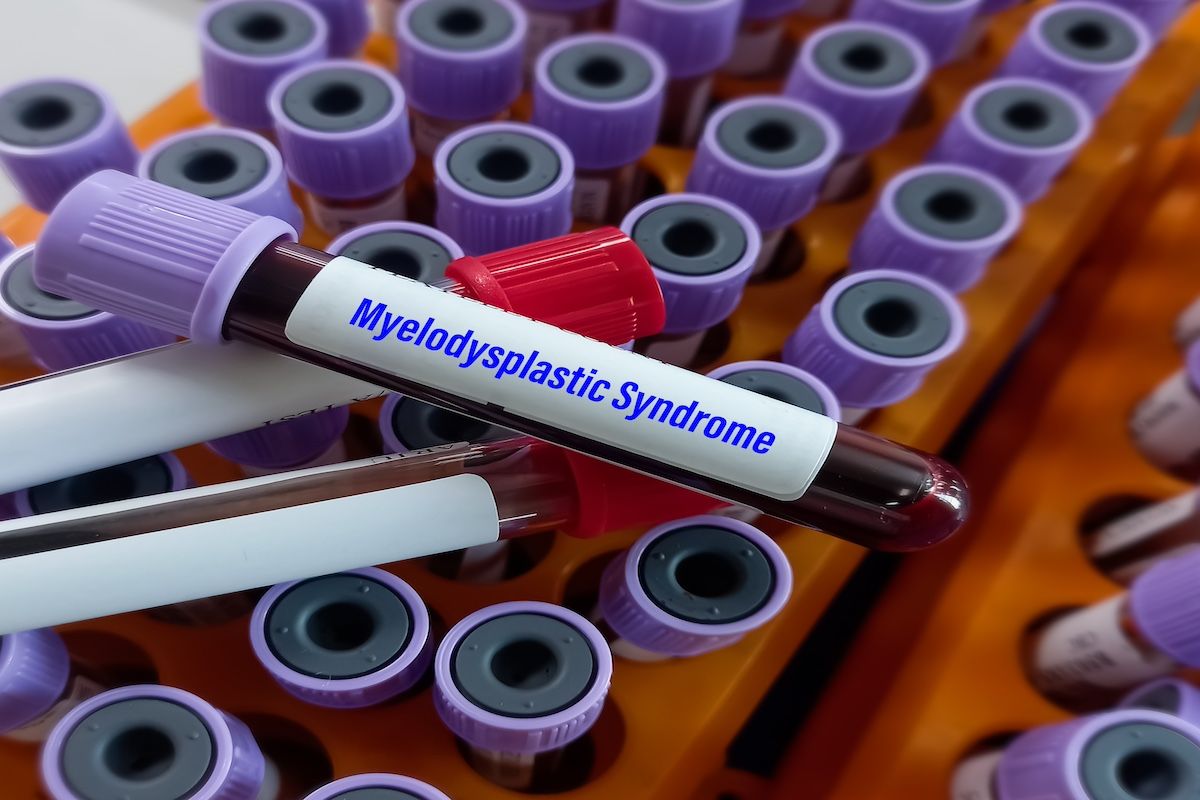Video
Oral Therapy for HR-MDS: Addressing Patient Adherence
Practical considerations for managing patient adherence on an oral therapy for higher-risk myelodysplastic syndromes.
Transcript:
Bruce Feinberg, DO: Ryan, wearing the pharmacy hat, we now have oral therapies in this disease. We’ve talked about an oral HMA [hypomethylating agent], and we’ve had lenalidomide. You mentioned it in passing before, but when it comes to providence over the distribution of that agent and the extent to which that has an impact on the quality of patient outcomes, what do we know about it?
Ryan Haumschild, PharmD, MS, MBA: I’ll put on my payer hat and my health care hat for this one because it relates to both. As we know, with Revlimid, there’s limited distribution. We know that only pharmacies that were dispensing the drug initially are able to dispense under the REMS [Risk Evaluation and Mitigation Strategy] requirement, and that’s how it’s taken place. But more and more, we’re seeing health systems—whether it be Yale University, Emory Healthcare, or anywhere else—starting to develop their own health system or IDN [integrated delivery network]-owned specialty pharmacy.
To Amer’s point, with these oral therapies that we’ve mentioned, it’s a class effect across all worlds. You have to manage them very closely. You’re still giving chemotherapy or an anticancer agent just like you would be infused in the infusion center. We’re just not there in person. We’ve got to create really good oversight in terms of education. Is everything documented in the EMR [electronic medical record]? Are we dispensing through the EMR so that we have good notes and reconciliation?
I’ll tip our hat a little. At Emory Healthcare, we published an article that looked at our patients on oral anticancer medications. We took our outcomes vs PBM [pharmacy benefit manager]-owned specialty pharmacies. With the same provider, we looked at the adherence and time to treatment for these agents, independent of the provider, but looking at the differences in pharmacy. In an IDN-owned specialty pharmacy, there was 25% better adherence. We just talked about persistence in this treatment class for patients being successful. You’re starting to tease out the difference there in patient outcome based on where drugs dispense within that integration.
Lastly, time to treatment was 4 days faster. When I think about these treatments and I’m a provider and I want to get a patient started, as Amer mentioned, they’re transfusion-dependent for a little while as they get ramped up. The earlier you can start, the better it is for the patient. I see that coming into play, especially when you have close monitoring and the patient calls and says, “I have some rate-limiting toxicities.” The specialty pharmacy can stop that dispense. Or they get a call from the patient and they can add that note into the chart, and then Amer can review that when he’s working up the patient. That’s the best patient care model that can exist.
Bruce Feinberg, DO: Tracey, you mentioned before about a wearable, or some other means by which there’s daily communication with the patient. To what extent will the advocacy organizations like yours start to push those kinds of solutions? It’s not like they don’t exist. It reminds me of telemedicine. It was around for 2 decades before COVID-19, and now suddenly it revolutionized medicine. But the solution didn’t happen now, it happened decades ago. The ability to get all stakeholders together around it was what was needed. Unfortunately, we needed a catastrophe to do it. It seems like there’s that need. It’s difficult for someone on Ryan’s team or Amer’s team to be calling that patient every day and checking on them when there are solutions already. To what extent is the advocacy community trying to say, “It’s time?” Just like with telemedicine, it was time. It’s time for this to happen. There’s no reason why it shouldn’t.
Tracey Iraca: Absolutely. It’s so important to make sure the pill is being taken every day like it’s supposed to be, or before the time that it’s supposed to be. Anyone with aging parents knows, my parents are forever saying, “I forgot to take my pills.” How do we keep that from happening? Maybe it’s a mobile app. Maybe it’s a reminder if they’re using mobile devices, like an iPad or a phone, where they get or set reminders. Maybe it’s talking with their caregiver team and saying, “Someone has to be in charge.” Who’s there to make sure they’re getting their medication? We’re looking into multiple areas. In some cases, it can be someone from the team, whether it’s a nurse, social worker, or someone who does a frequent check, even if it isn’t every day, to make sure they’re remembering to take the medication.
Bruce Feinberg, DO: The problem is the efficiency of text or push-based, that’s a simple response. When you get your appointment to get a haircut, you get a text, “Please confirm, yes, hit 1.” For a reservation at a restaurant, a day before, “Please confirm.” It’s so universal, except in health care where it could be so differentiating in terms of quality. Amer, what more do you think needs to be done to support these patients for all the reasons we’ve been talking about? It almost feels like that daily communication would be so valuable.
Amer Zeidan, MBBS, MHS: Very good education. In addition to what was mentioned, the fact that although this is an oral pill, there still could be toxicities and problems. It’s very important to communicate with the doctors very well. I have to emphasize that the idea of oral therapy isn’t only a convenience for the patient in that they don’t have to come. From our side, all of our infusion chairs are busy all the time. Trying to find an infusion chair for a patient to get a drug for 5 days can be quite a problem, so it’s giving us more chair time.
But also on the patient side, many patients can’t get intravenous infusions without having a port all the time. Those ports can come with infections and complications. As I mentioned, especially for patients who don’t need transfusions, they don’t need a port and they don’t need to come. The chair is open. There are many benefits that can come that are important to quantify because they could probably pay for other services that could be provided to the patients, like these education tools and how to make sure the patients are compliant and remember to take their medication. It’s important to remember that oral therapy isn’t for every patient, because there are certainly patients who aren’t as compliant and aren’t going to go for the blood work. There are situations in which you might have to consider, is this a good candidate for this therapy or not?
Bruce Feinberg, DO: Ryan, you’ve been in a very progressive practice, doing the research that you’re describing as well as the way you’ve expanded your care teams, including pharmacists. Has there been talk about trying to use a wearable text-based solution to try to increase the connectivity?
Ryan Haumschild, PharmD, MS, MBA: That’s what we’re looking for. There’s a lot of excitement around wearables. We’ve seen it more in the chronic disease space with hypertension. We’ve seen it with even hyperlipidemia, where it has constant monitoring for the familial type, also, as we look at some of the types of endocrinology, I would love to see something in that space.
We’re doing an internal evaluation with a smart capsule, where if a patient opens up where their medication is stored, it will allow us to know how many times they actually touched it or opened it. Then also as in clinical trials, we reconcile the tablets when the patients bring them in to look at persistency from that regard. We’re excited about wearables and some of the technology that can exist in this space and what it might be able to do to improve adherence, or for us to be able to recognize nonadherence early and intervene instead of always having to reach out and utilizing our labor in that way.
Transcript edited for clarity.





